This post may contain affiliate links. Read more at our disclosure policy.
This Authentic Texas Chili Recipe has the fundamentals of a Texas inspired chili. Meat, specifically chuck meat, chile pods, and beer. No beans. If you like beans in your chili you can find a fantastic version in our award-winning brisket chili recipe (did I mention that one does have beans?).
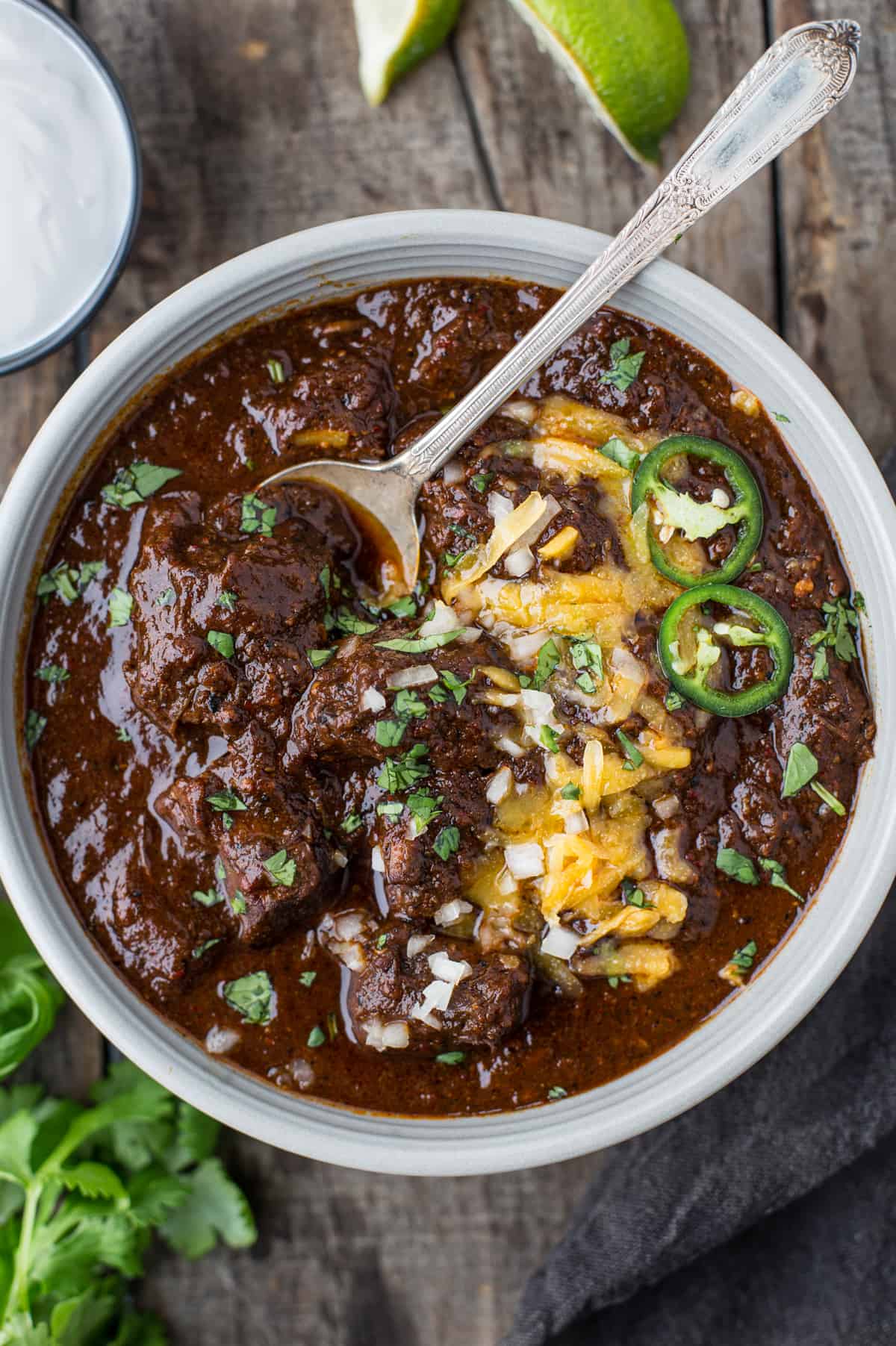
So before we get to this authentic chili recipe let’s discuss what we dug up when researching the idea of an authentic Texas Style Chili. It’s….complicated.
Table of Contents
- What is Chili?
- Chile versus Chili
- Texas Chili vs Well, Everywhere Else
- Main Ingredients
- Types of Chile Pods For Texas Chili
- Making Texas Chili
- Tools
- Video
- Preparation – Making the Chili Paste
- Browning the Chuck Meat
- To Make The Texas Chili
- How to Thicken
- Toppings
- Frequently Asked Questions
- Related Recipes
- Authentic Texas Chili Recipe – No Beans
What is Chili?
Any chili (or chili con carne) by definition is a stew (yes, I said it, stew – not soup) cooked with chiles, whether fresh or dried chiles, that’s it. That’s the definition. Anything else you want to put in there still makes it a chili. Prove me wrong.
The origination of this style of Texas chili came from Northern Mexico or Southern Texas, depending on the sources. Either way, we can thank our friends in Texas for having a say in how the classic dish came to be.
Chile versus Chili
For all of our recipes we use the term “chile” to refer to fresh or dry ingredients, and “chili” for the name of the dish or recipe.
Texas Chili vs Well, Everywhere Else
By definition it’s a chili recipe with meat (typically chuck meat), chile peppers (most often dried peppers made into a paste), beer, and then it’s slowly cooked with stock to reduce and thicken. Note – no beans – no ground beef.
Tomatoes will depend on where in Texas you are. Like classic BBQ, Texas has regional variations, and in this recipe we have no tomatoes.
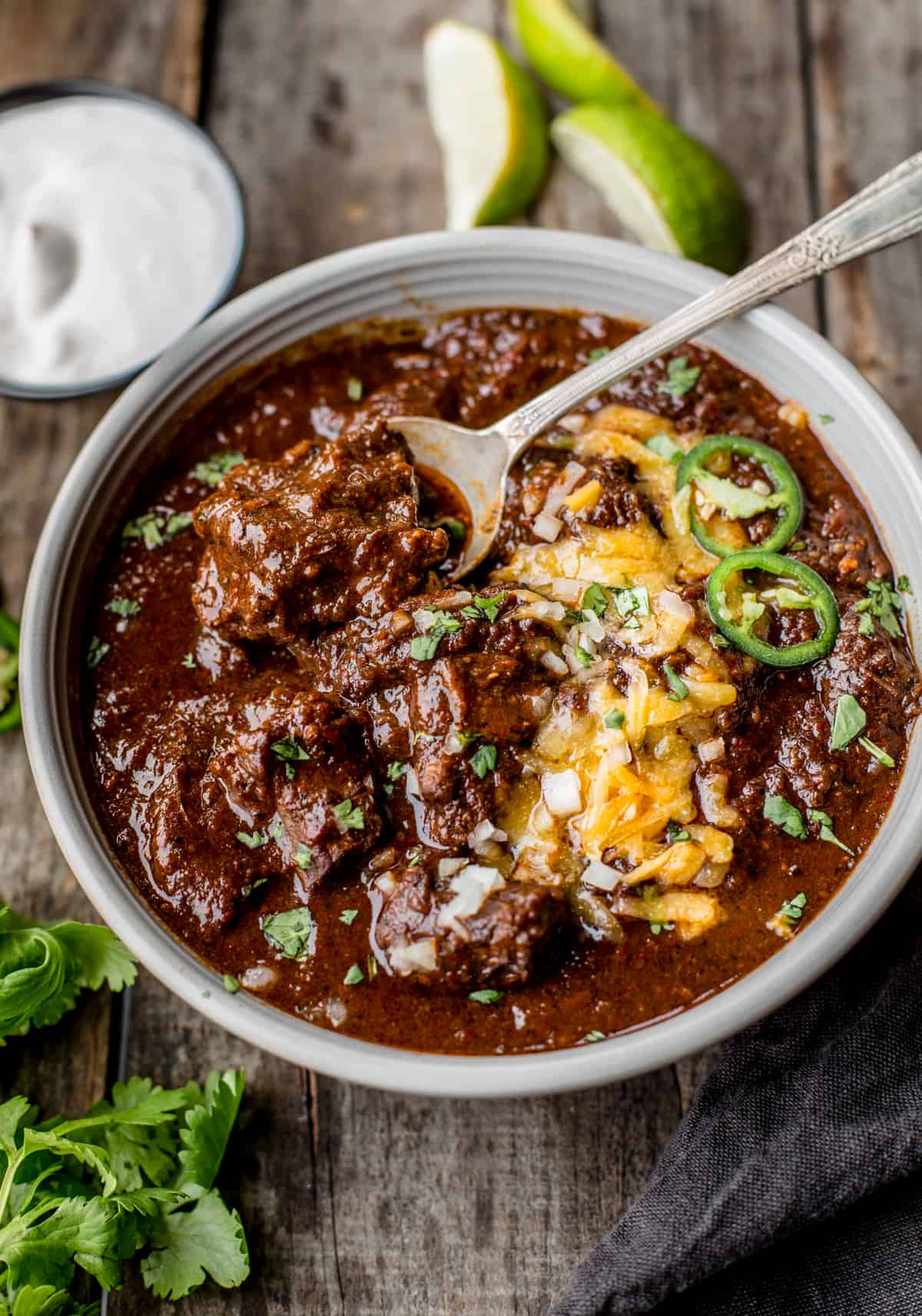
Main Ingredients
Note that we are not adding beans or tomato sauce for this Texas-Style chili.
- Beef: Beef Chuck Roast is the preferred cut for true Texas chili. Chuck Roast is from the shoulder of beef cattle with incredible intramuscular connective tissue and marbling. After braising for a long period of time that chuck meat renders down and becomes a delicate soft texture that is fork tender and will fall apart. The only other beef cuts we would recommend using is cubed brisket or boneless short ribs.
- Beef Seasoning: We use a blend of kosher salt, black pepper, and garlic powder (or SPG Rub) to season the beef. You can use your favorite grocery store bought seasoning as well.
- Chile Paste: Use a single variety of dried chili pods or use different types of chilis for various heat levels and flavors. You want a total of 3-ounces total of dried chile pods.
- Yellow Onions and Garlic Cloves: Diced onion and finely chopped garlic add a savory flavor to the chili that balance out some bitterness of the chile pods.
- Braising Liquid: A good quality beef broth and lager beer is added to the paste and this becomes the braising liquid that renders the chuck roast.
- Masa Harina Flour: After the beef has braised, add masa flour to the Texas Chili so it thickens.
- Toppings: You can get as creative as you want. We like a shredded cheddar cheese, dollop of sour cream, chives or green onion, warm corn tortillas.
Types of Chile Pods For Texas Chili
There are dozens of dried chilies (often you’ll see dried chile with the “e” versus chili) you can choose from. You’ll find these in the Mexican aisle of the grocery store or at a specialty market. Be sure for this recipe you combine 3-ounces total of dried chili. For best results use a kitchen scale to measure out your ingredients.
Types of Chilies We Use
- Guajillo – (Med) Another great chile for base sauces like our chili paste. These are earthy with a slight sweetness and not overly spicy.
- Red Chili – (Mild) Also called New Mexico dried chili or just red chili pods, these are a mild chili with savory flavors and nice acidity when toasted.
- Pasilla Negro – (Mild) These large chiles are soft and add a rich earthy flavor and dark color. These are often used for mole sauce and give body to the chili paste.
- Chile de Arbol – (Spicy) This is the heat to our dish. It is small and spicy. We are using a larger portion of this for the heat factor (15,000 – 30,000 Scoville units compared to the Jalapeño at 3,500 – 8,000) and for the flavor and color.
Based on your preferences, this is our recommendation of blends for a Mild Chili vs a Spicy Chili assuming 3-ounces total weight.
- Medium Heat – Little Heat, minor acidity on the finish. Use one 3-ounce package of Guajillo.
- Mild Heat Chili Blend – Moderate heat and acidity on the finish. Use 7 Red Chilies and 5 Passilas.
- Spicy Heat Chili Blend – Spicy up front, spicy finish, high acidity. Use 1 loose cup of Chile de Arbol, 3 Passillas, and 4 Guajillo.
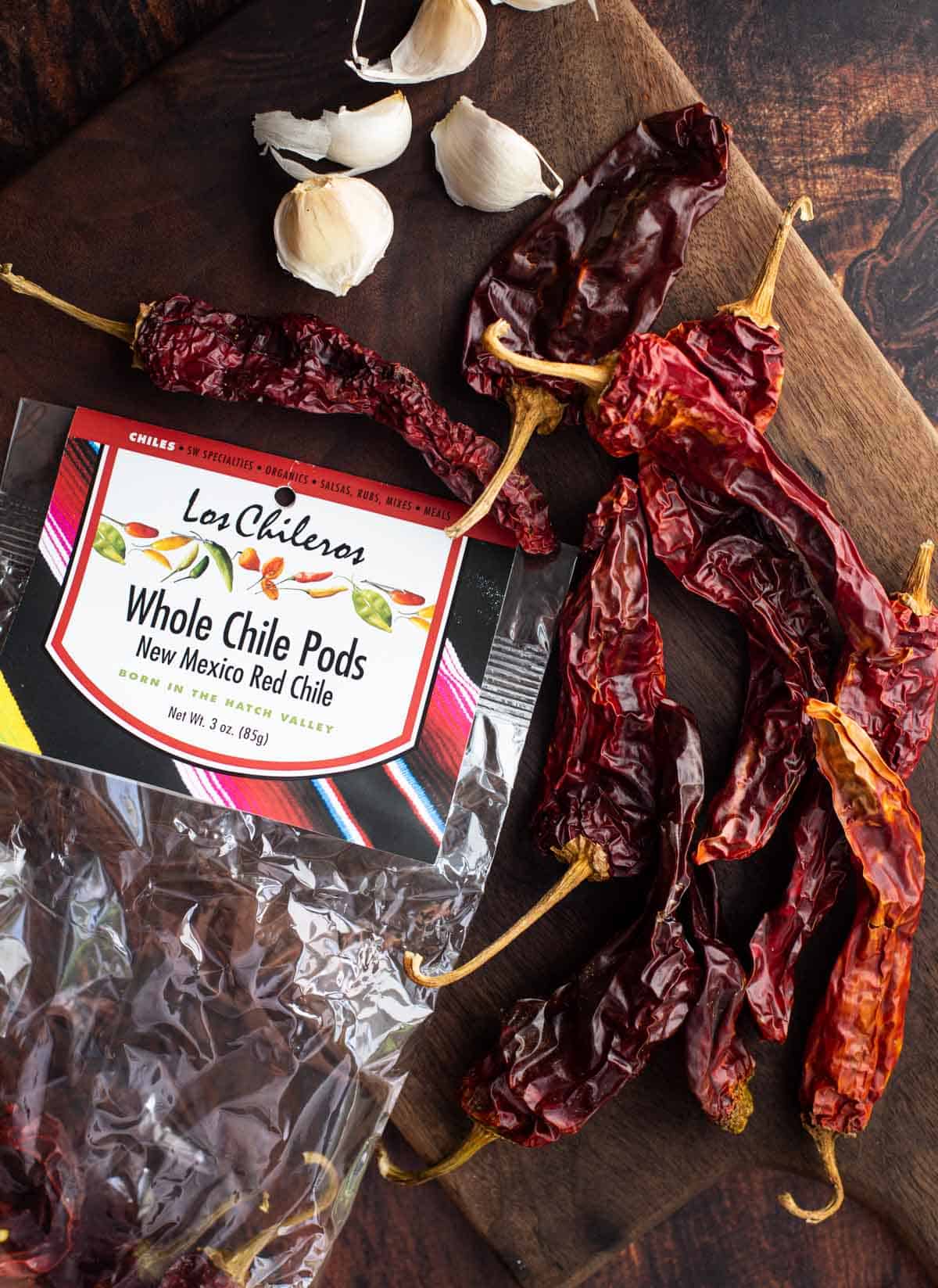
Making Texas Chili
There is a process for making a true Texas Chili, and the key element is making a chili paste. After that it’s allowing the browned beef to simmer in the liquids to render for a tender beef bite.
- Prepare your ingredients – Be sure all ingredients are laid out and the beef is cubed and seasoned.
- Make the paste – Use roasted dried chile and then blend with hot water to get a thick paste. This gives it the distinct (and important) flavor versus using dried powders.
- Brown the chuck meat – Browning the chuck meat adds flavor to the beef as well as allowing the seared meat that is sticking to the bottom of the pot to incorporate into the dish as it simmers.
- Soften onions and garlic – Remove the chuck meat and then start making the actual chili by softening the onions and garlic.
- Add ingredients – Layer in the remaining ingredients and slowly simmer away for a few hours to let the sauce reduce and tenderize the meat.
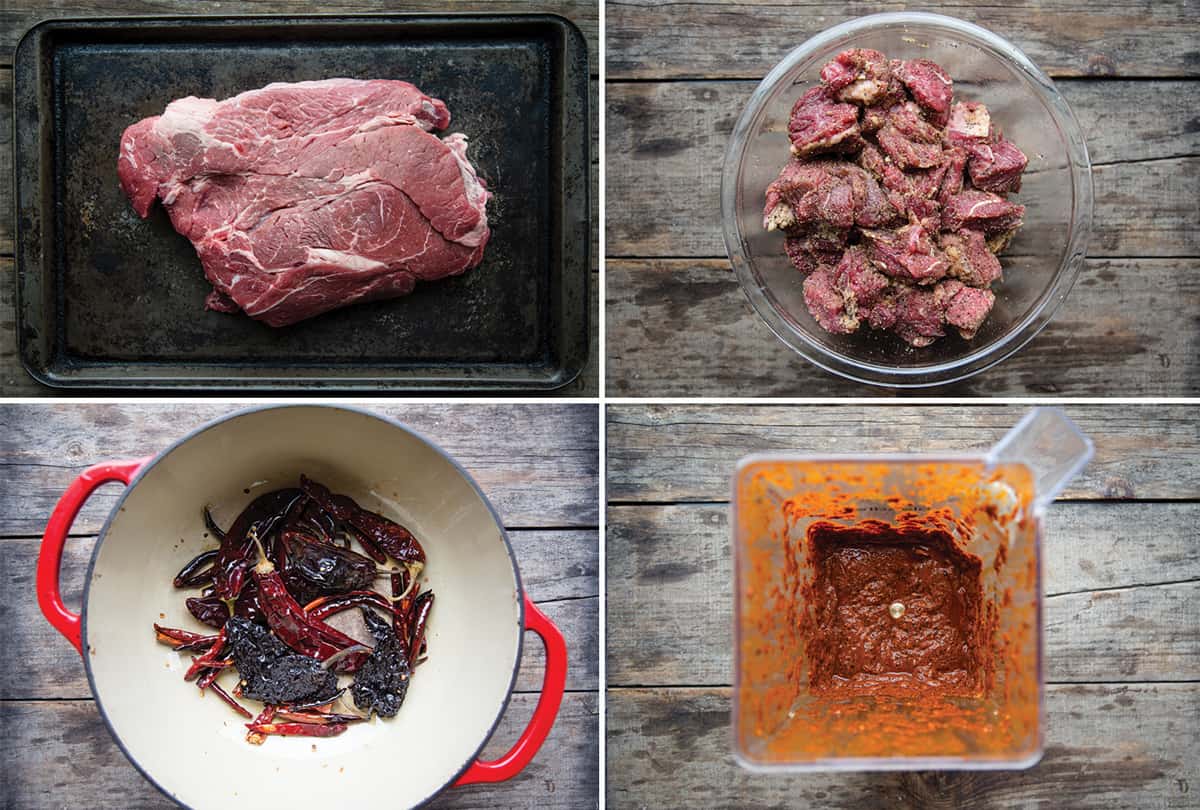
Tools
You’ll want a good blender to make the paste and a large Dutch oven or large stock pot. If you don’t have a good blender use a good immersion blender.
Video
Would you like to save this?
Preparation – Making the Chili Paste
Roasting the chiles for the chili and turning it into a paste adds the classic rich flavor versus using dried spices.
Using a mix of different types of dried peppers adds flavor and heat versus just using one single type. Since there is no “dried chile” seasoning in this dish, the variation of peppers is the backbone of the flavor.
Toast them in the pot with olive oil for 6 – 8 minutes over medium heat. Once they toast, remove the stems and discard them, then add the remaining chiles to a blender with 1 cup of water and puree until smooth.
Note: Removing the stems before cooking will result in all of the seeds falling into your dish and burning. Remove the steams after cooking.
Browning the Chuck Meat
Make sure the chuck meat has been cut into equal size cubes of meat before seasoning. We cut into 1-inch cubes. It will render and shrink as it cooks.
Start by seasoning the chuck meat with olive oil and our SPG beef rub. Then brown it in two batches to get that nice crust on the outside of the meat (we do two batches to avoid crowding the pot).
If there is too much meat, it will steam and never develop a good crust. As the meat browns, the drippings at the bottom of the pan become a nice flavor addition once the liquids are added and deglaze the pot. Remove the browned meat to finish the remaining steps in making the chili.
To Make The Texas Chili
With the chuck meat removed, next add more olive oil to the Dutch oven and then soften the onions and garlic. We use six large cloves because we love garlic flavor in the chili. After they soften, we start to layer in the ingredients.
- Add the beef back into the pot, turn up the heat to medium, and pour in the beer. Let it simmer for a couple of minutes.
- Then add the chili paste and stir to incorporate, keeping the heat on medium.
- Add the beef stock and stir. The dish may appear to have too much liquid, but it will reduce.
- Bring to a simmer, and leave it simmering with the cover off, occasionally stirring every 15 minutes or so. At this point, continue simmering for three hours to let the liquid reduce and the flavors concentrate. This will intensify the chili flavor and it will render the chuck meat and make it very tender.
- As the meat renders use a fork to see if the meat is tender. When it is tender, and almost falls apart, it is done. This is when to add masa flour. The masa flour will act as a thickener.
- Adjust any seasonings (like salt), and serve with your favorite toppings. This is where we love adding fresh peppers like jalapeño.
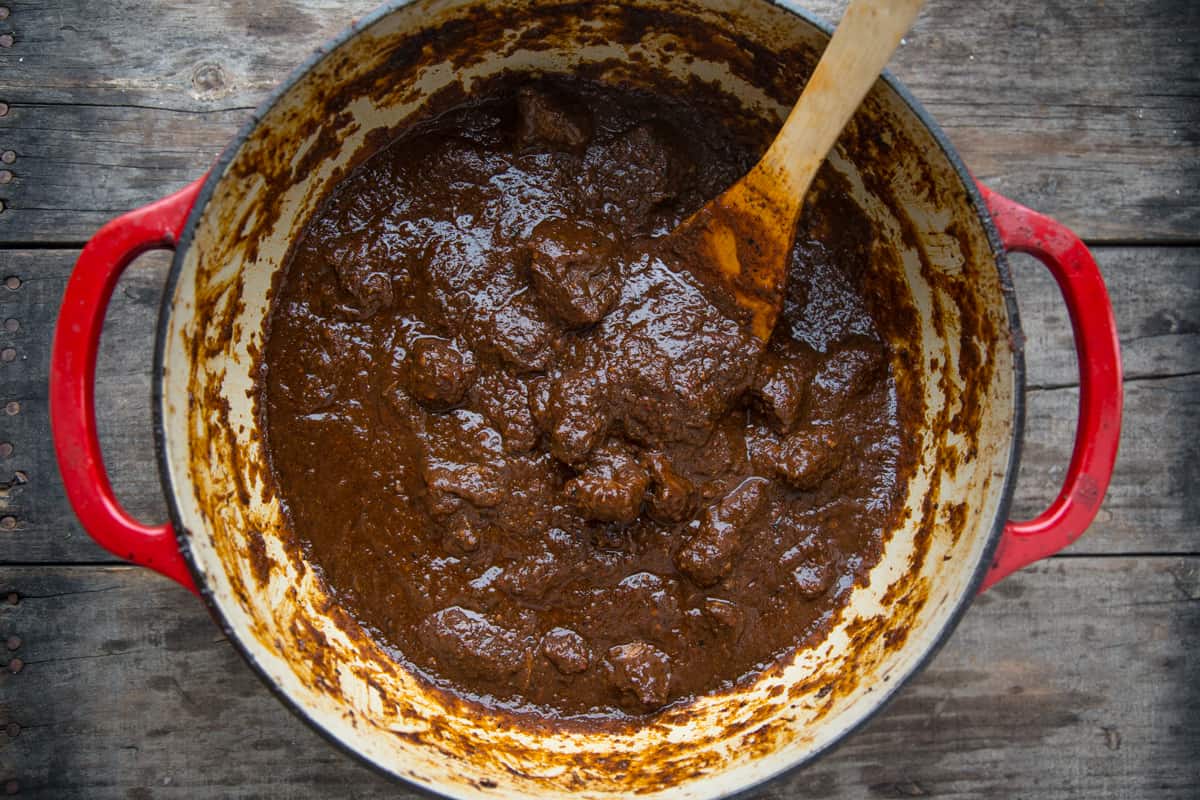
How to Thicken
We use masa (corn) flour to thicken right as we finish the chili. This allows the chili to naturally reduce over the few hours of cooking and then add the additional thickening agent at the very end.
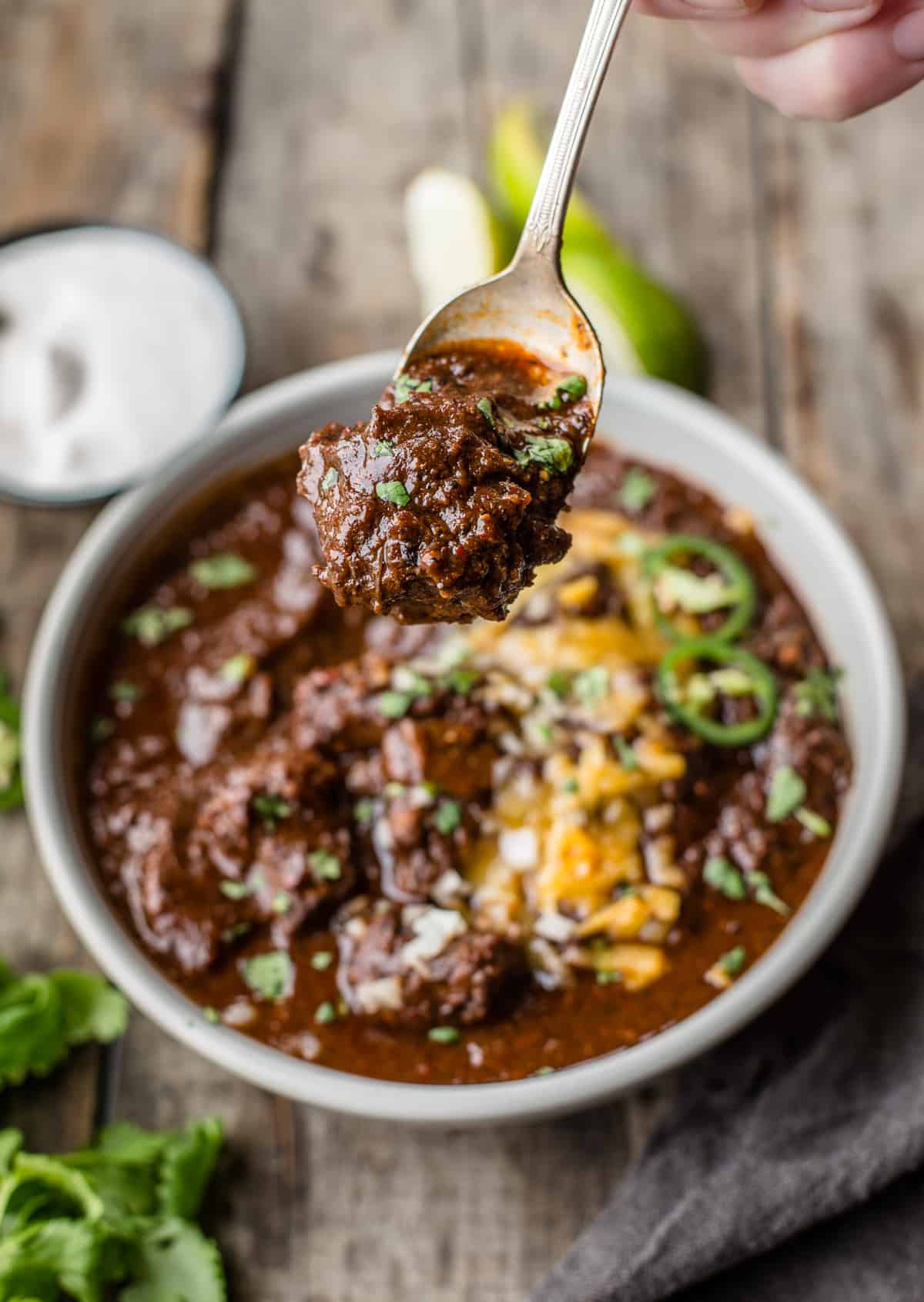
Toppings
Once the chili is thickened and in bowls serve with your favorite toppings. We typically add shredded cheddar cheese, green onion or chives, and some jalapeños thinly sliced.
Sides of warm corn tortillas is delicious or even crushed corn chips over the top.
Frequently Asked Questions
When reheating leftovers (if there are any), add a 1/4 cup of water to chili in a sauce pan over medium heat. This will thin out the chili slightly while reheating.
It’s rich and a meal itself, so we keep it simple. Our favorite side is skillet cornbread for this recipe. It complements the rich flavor of the chili. You can also warm up flour or corn tortillas.
No beans in authentic Texas style chili. As with any region there are variations but in general no beans.
Because of the heat, grab a beer like a lager or pilsner. Going for a wine pairing with this? A crisp and fruity rosé to offset the heat.
Related Recipes
We have several variations of chili. Here are a few of our favorites or check out our favorite chili recipes.
- Smoked Brisket Chili
- Ground Beef Chili
- Smoked Chicken Chili
- Turkey Chili
- Chili Dogs
- Green Chili Turkey
About Vindulge
Mary (a certified sommelier and recipe developer) and Sean (backyard pitmaster) are co-authors of the critically acclaimed cookbook, Fire + Wine, and have been creating content for the IACP nominated website Vindulge since 2009. They live in Oregon on a farm just outside Portland.
Tried this recipe? Give us a star rating and we would love to see! Mention @vindulge or use the hashtag #vindulge on all the social media handles. And consider subscribing to our newsletter where we drop all our favorite ideas and inspirations every week.
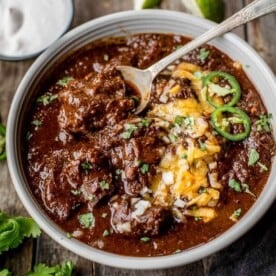
Authentic Texas Chili Recipe – No Beans
Equipment
- Large Dutch Oven
- Blender
Ingredients
For the Chili Paste
- 1 tablespoon extra virgin olive oil
- 3 pods dried pasilla peppers
- 4 pods dried guajillo peppers
- 1 cup loosely packed dried chile de arbol
- 1 cup water
For the Texas Chili
- 3 pounds chuck meat, cubed into 1 inch cubes
- 3 tablespoons extra virgin olive oil, separated
- 3 tablespoons beef rub
- 2 cups diced yellow onions, (About two medium sized yellow onions)
- 6 cloves garlic, diced
- 1 12-oz can beer, (We used lager)
- 5 cups beef stock
- ½ teaspoon kosher salt
- 2 tablespoons masa flour
Optional Toppings
- 1 small jalapeño, sliced
- ¼ cup finely diced white onion
- ½ cup diced cilantro
- ¼ cup sour cream
- ⅓ cup shredded cheddar cheese
Instructions
Chili Paste
- In a large dutch oven (we use a 7.5 quart) over medium heat, add olive oil and the dried chiles. Sauté the chiles for 6 – 8 minutes until you smell the aroma of the toasting chiles.
- Remove the stems from the chiles (and discard) and place the remaining chiles into a blender with 1 cup of water.
- Puree for 1 minute or until the texture of the paste is smooth.
Make the Texas Chili
- Season Beef: Season the beef cubes with 1 tablespoon olive oil and beef rub.
- Sear Beef: Add 1 tablespoon of olive oil to the same large pot the chiles were roasting in over medium heat. In two batches add the cubed chuck meat (no need to add more olive oil in between batches). Stir the beef to brown the sides. Remove the beef and set aside for later.
- Soften Vegetables: Add remaining 1 tablespoon olive oil over medium heat, and add the onions and cook about 6 minutes while stirring often (just to soften the onions). Add the garlic and cook for 1 additional minute.
- Add Beef and Beer: Return the beef to the pot and then add the beer. Stir for 1 minute.
- Simmer: Add the reserved chili paste, beef stock, salt, and stir to incorporate. Bring the chili to a low simmer and continue simmering uncovered for 2 – 3 hours stirring occasionally. The chili is done when the beef has become fork tender, almost falling apart AND the liquids have reduced. This will take between 2 and 3 hours.
- Add Masa Flour: Once the beef is done and liquid has reduced, add the masa flour and stir. Turn off the heat and continue stirring. The chili will thicken.
- Serve: Serve with your favorite toppings.
Video
Notes
- Medium Heat – Little Heat, minor acidity on the finish. Use one 3-ounce package of Guajillo.
- Mild Heat Chili Blend – Moderate heat and acidity on the finish. Use 7 Red Chilies and 5 Passilas.
- Spicy Heat Chili Blend – Spicy up front, spicy finish, high acidity. Use 1 loose cup of Chile de Arbol, 3 Passillas, and 4 Guajillo.
Nutrition
Nutrition information is automatically calculated, so should only be used as an approximation.
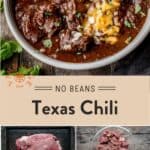
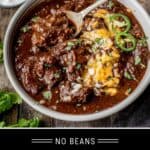
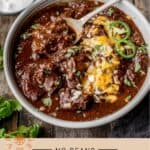



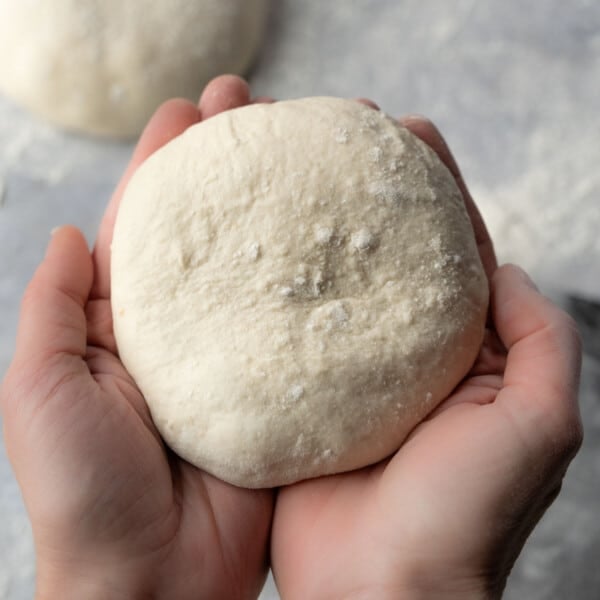

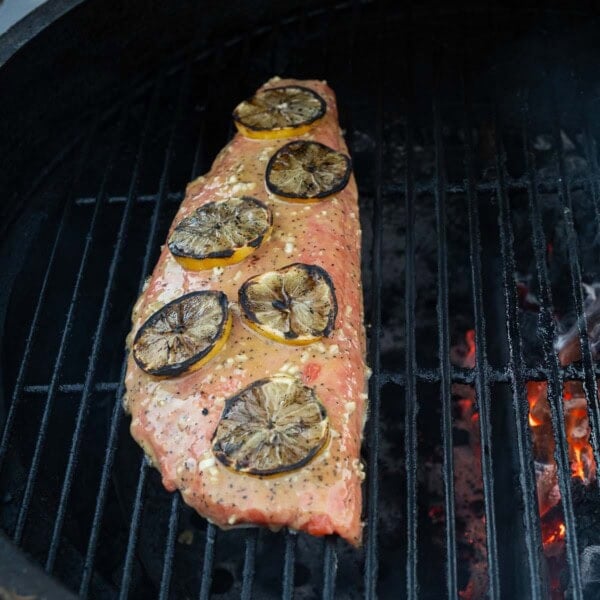
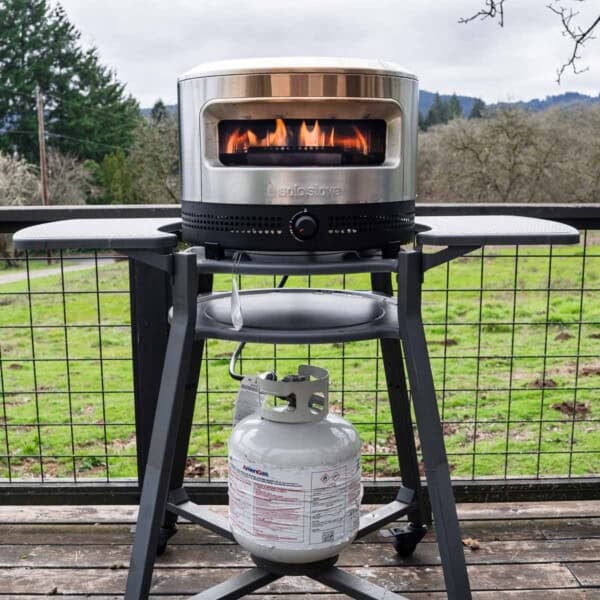
















Thank you for a wonderful Texas chili recipe and a stunning cookbook in Fire + Wine. I’m not given to hyperbole, but there is not one recipe in the book that I don’t look forward to making. Grilling and wine are the stuff of dreams for me and you just made them come true. All success!
Thank you Scott for taking the time to share!!! And I hope you check out our newest cookbook coming April 1st all about pizza!!! Appreciate the feedback.
Made the Chili but it’s way too spicy for me to enjoy. I used too much of the Chile de Arbol peppers.
How can I tame it down?
One of the easiest ways to tame it down after the fact is to add more liquid and let it reduce again. Another option is to add whole milk in one cup increments to allow the milk to mellow out the heat.
I’ve not made this yet, but I intend to (of course, there are a lot of things I’ve intended to do over the years…but the coming year will be different!!! again). One of the things I like to do is smoke the whole, uncubed chuck roast for a couple of hours and then proceed with cubing and searing. It puts just enough smokiness on the meat and leaving it whole means that it’s not cooking much in the process. And it’s a bit easier to be able to do most of the cooking inside when the weather isn’t great. Have you ever tried this method or cooked the chili entirely on the grill? How did it turn out and what tips can you offer?
We absolutely have smoked chuck roast. Hover we like getting larger cubes so it has more surface area to take on smoke. Then when it hits about 160 ish we pull it off and cut into whatever sizes we want. Then if braised it gets to that fork tender level.
I grew up in Dallas. Before retiring, my father was in the spice manufacturing business. He has a wall full of Texas chili contest awards that he’s exceedingly proud of, and will not tell you entering that’s in his chili. Will not. This recipe is damn near the exact same recipe he made. It’s nearly identical, but I believe he added cumin. This will be my new forever recipe. Absolutely awesome. So much rich depth, a luxurious dark and smooth base , and the meat get so very tender. My family loved it and didn’t think it was too spicy at all. Thank you for this amazing and true Texas chili!
Thanks so much for sharing this feedback. Our goal was to make it authentic and cumin is a good add too!
Made the recipe last night, definitely my new favorite chili recipe. I hate (tomato and bean) chilis, so this was wonderful. Our Minnesota taste buds weren’t quote use the the extra spice, but the flavor incredible. Will definitely make this again.
We served with a side of rice the first night, then on top a baked potato the next night. Both great.
Awesome!! Thanks so much for taking the time to comment. You can also adjust the spice level by swapping out the chile de arbol with a different pepper so long as the weight is all the same.
If you like smokey and spicy flavors, you will like this chili. Very nice and unique flavors. When others say a dish is very spicy we take that with a grain of salt b/c it is usually not the case – THIS time it is true. My husband likes very spicy food and this was a bit much for him. We cut it with sour cream. You can also reduce the chili de arbol ratio as suggested.
Thanks for the comments! It is indeed spicy. We just made a mild version and will update the recipe with a mild version that is just New Mexico Dried Red Chiles.
This is hands down the best chili recipe I have ever made. Being from Texas, I’ve grown a bit tired of those who insist that “real” chili must have beans in it, but — while I love my pinto beans and have my own great recipe for them — they have no place in chili.
One of the best things about this recipe is that the chili’s heat/spiciness can be readily adjusted by increasing or decreasing the number and types of chiles used to one’s particular taste. In making our first batch, I pretty much followed your ingredient recommendations with one exception: I started off by using only half the recommended amount of the hotter arbol chiles so that I could get my significant other to agree to eat it with me. She’s always been a ground beef and store-bought chili kit type when making her own chili, but I can tell you that she was also blown away by your recipe. Additionally, she’s on board for boosting the amount of chiles used over our next few renditions to see where it takes us. I know many who like their chili very, very spicy, and I’ll clue them in on adjusting that part of the recipe to their heart’s content.
One small change I did make to your recipe was to cut the chuck roast into smaller pieces, more like ¼ to ½ inch cubes, and I think the mouthfeel came out better than it might have with the larger 1 inch chunks you suggested. That being said, I highly recommend this recipe and will share it with every one of my chili-loving chums. Love you newsletter, and keep up all your great work with recipes and wines!
Jeff, we love this and appreciate your specificity and modifications. We are also going to modify the content as well so we have a mild version too so a broader audience has a ratio for less spice. Grill on!
I followed this recipe, except I had to make some substitutions for what I had on hand: used moose and round steak, chipotle peppers, and dried thai chili…still turned out SO GOOD! Delicious. Tons of depth.
!! WARNING !!
This chili is unbelievably spicy. So much so, no one in my house could eat it. We tried diluting, adding cream and other reduction measures to make it less spicy, but couldn’t make it edible.
It smells divine and has a remarkably good flavor. So if you order 4 stars at Thai restaurants I’m sure you’ll love this, but I wouldn’t expect the average guest or kids to be able to eat it.
This is very similar to mine. One note, corn masa can be used to thicken, but it makes the stew grainy. I like this sometimes, but I usually add a small amount of tomato paste, which adds body, and then reduce the liquid slowly. The result is a nice thick stew.
The only change I’d make is to add some ground cumin. About 1 part cumin to 4 parts chili powder. Since you make a paste (smart), add the cumin before making the paste. The aroma is unbelievable!
If your budget permits, tri-tip is a very nice alternative to Chuck. Partially frozen, it cubes up nice and small.
Chuck those are awesome recommendations. Thanks for sharing!!